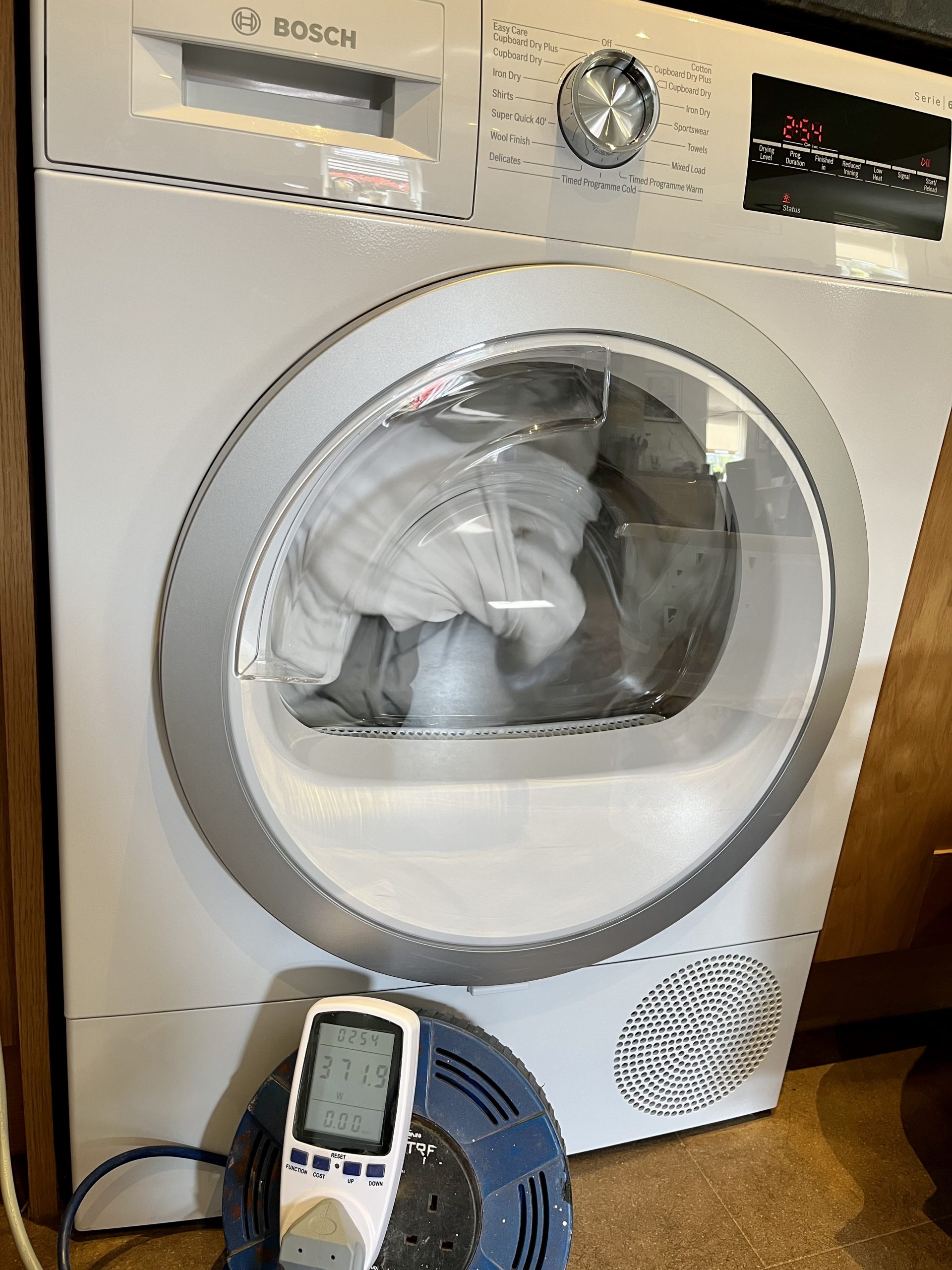Heat Pump versus Condenser Tumble Dryers
Are Heat Pump Tumble Dryers cheaper to run?
For many years we used to a have a Bosch Excell 7 tumble dryer. This was the old condensing style.
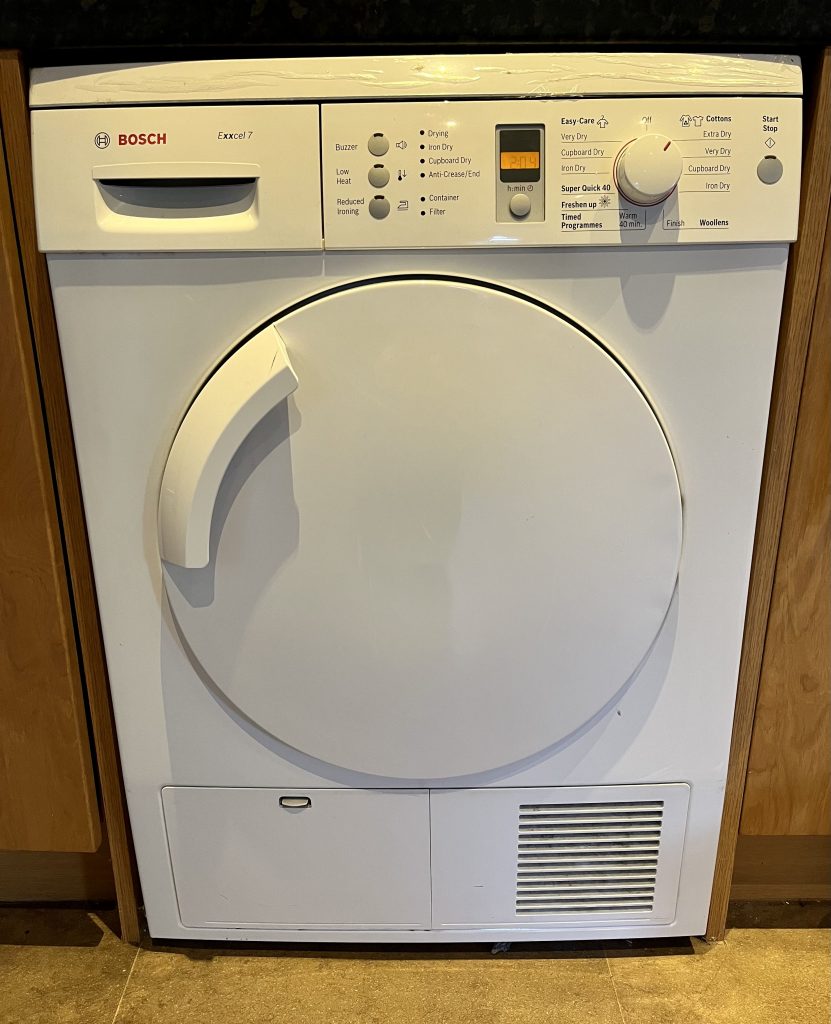
A tumble dryer is a necessary evil for us. We are a family of 4 with 2 young children so the washing machine is seemingly always on.
Obviously the number one choice is get the clothes out on the washing line, but for 6 months of the year this can be a challenge, so we use the tumble dryer a lot.
But I hated using it.
- It used a shed load of energy.
- It filled the downstairs in damp moist air.
- The clothes came out very hot, almost too hot to touch at times.
Yes, much of the water created by the drying process went into the condensation container, but lots of it came back out into the room. Steaming up the windows etc.
As for the energy usage, it used to cane juice like nobody’s business as you can see from this excerpt from the user manual.
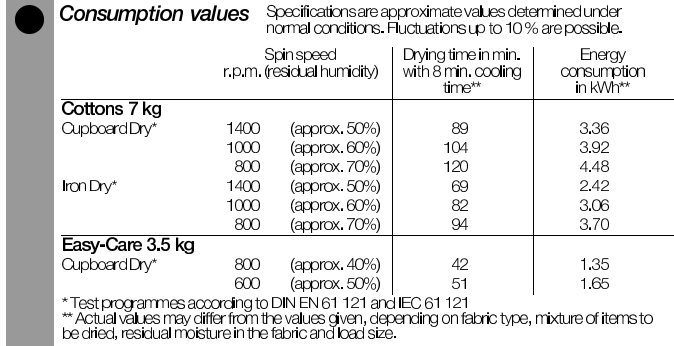
Sadly I have no real world monitoring figures and graphs for you as I didn’t think about this article until after I’d replaced the old unit. But rest assured, it used to ramp up to pulling over 2kW peak for a looooong periods of time. Ie, 90-120 mins for a full load, so sometimes total usage of around 4kWh.
Making the move to a heat pump tumble dryer
So what about the replacement? Are heat pump tumble dryers all they are cracked up to be?
After research we decided to stick with Bosch as we have both their Washing Machine and Dishwasher. Aesthetsics etc
We decided on the Bosch WTR88T81GB heat pump tumble dryer.
After 6 months of ownership, we love it.
- It’s quieter than the condenser dryer.
- There is no moist air discharge into the room.
- It uses a lot less energy to run.
Here’s the official energy consumption figures from the manual
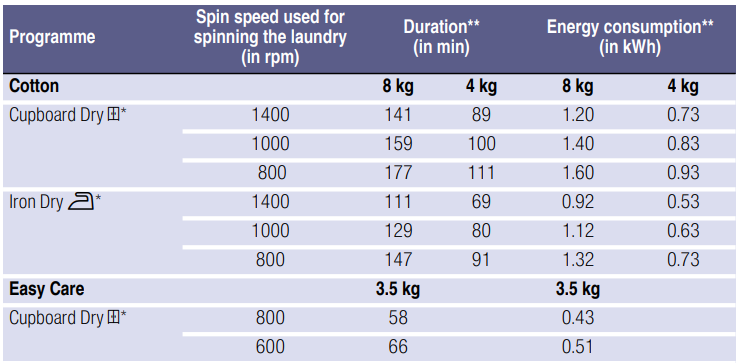
These instantly look better than the condensing model.
Real World Heat Pump Tumble Dryer Consumption
As well has having the official data, I thought I’d do a real world test to see what things looked like.
When we were looking to buy a heat pump tumble dryer we couldn’t find any proper usage and consumption figures, so I hope this little experiment helps someone.
I threw in a bunch of cotton bedding and a mattress protector that had been washed and spun at 1400rpm. I choose the most intensive programme on the dryer; Cotton Cupboard Dry Plus.
Using a simple energy monitor I watched the actual usage as the drying progressed.
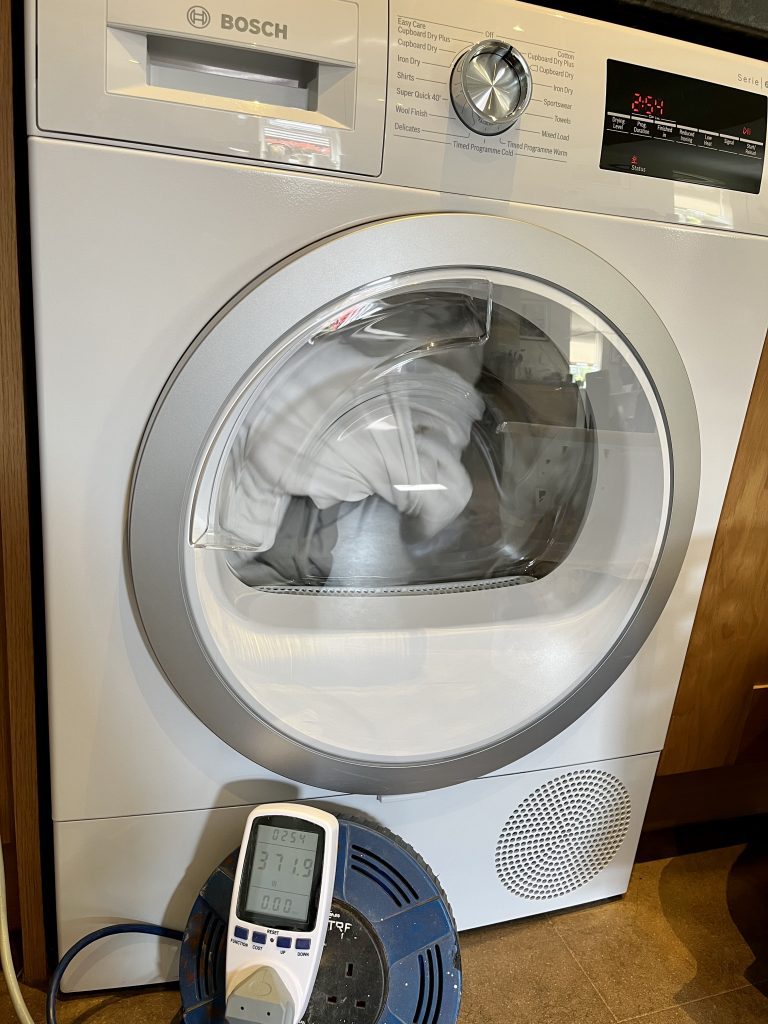
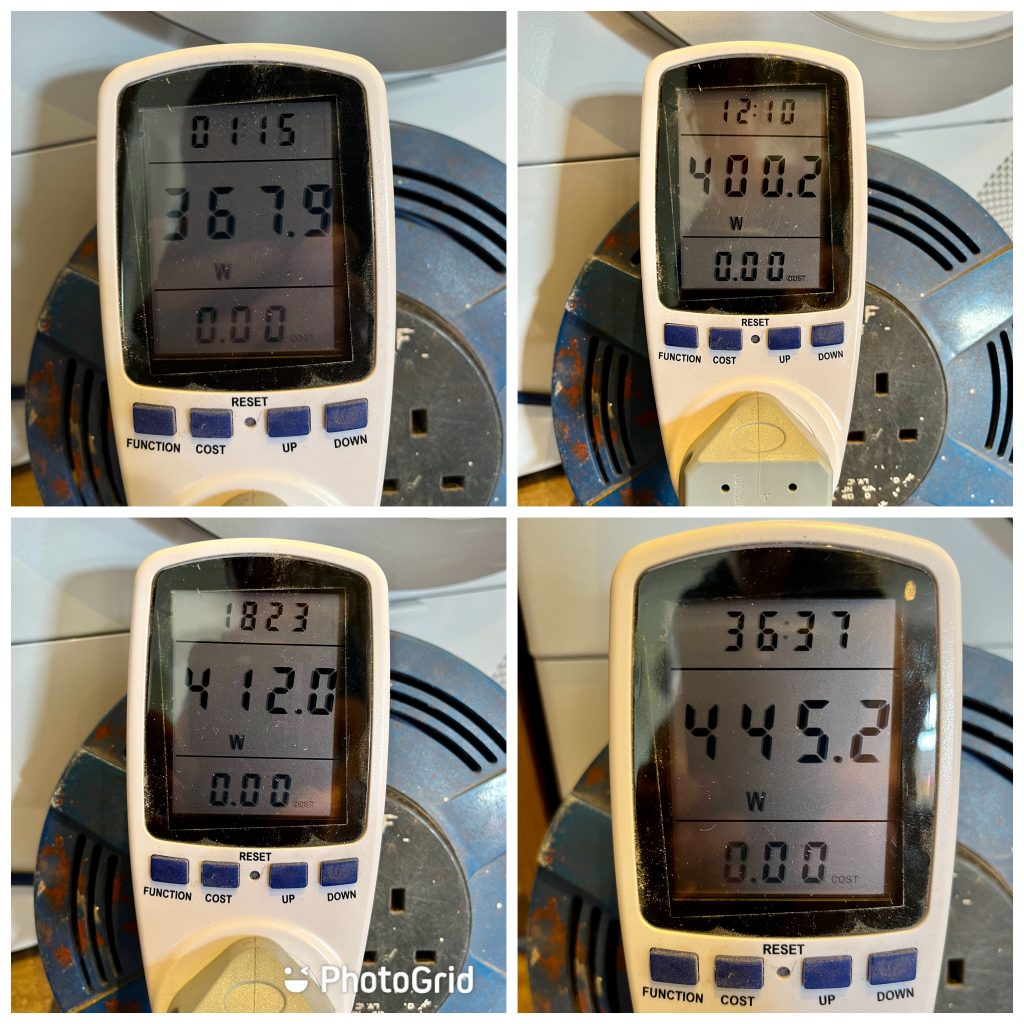
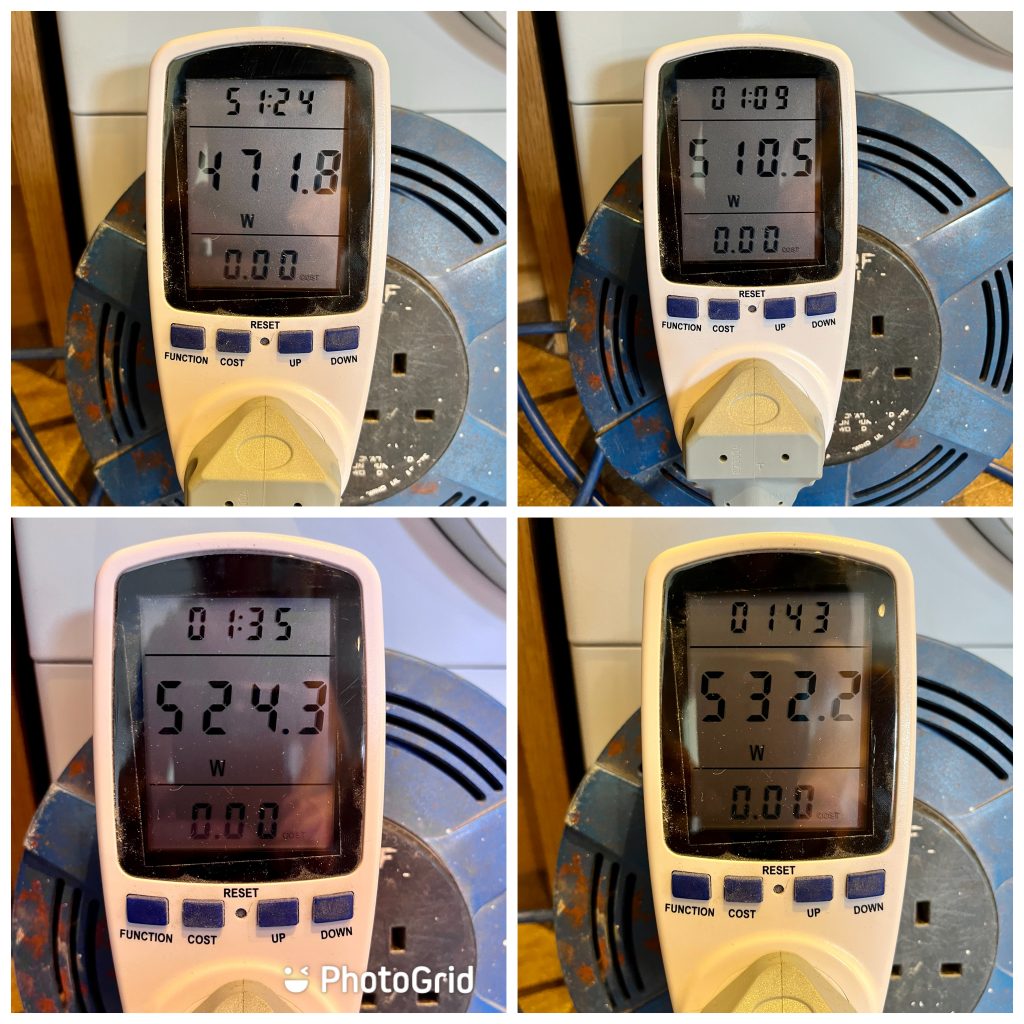
As you can see from the photos, the dryer gradually increased its energy usage throughout the drying period. Starting around 370W and finishing around 530W peak.
This is delightfully low though compared to the 2kW (2000W) the old condensing model used to pull.
In the end, the drying programme took a total 1hr 44 minutes.
Over the whole drying period the total electrical usage was just 0.78kWh.
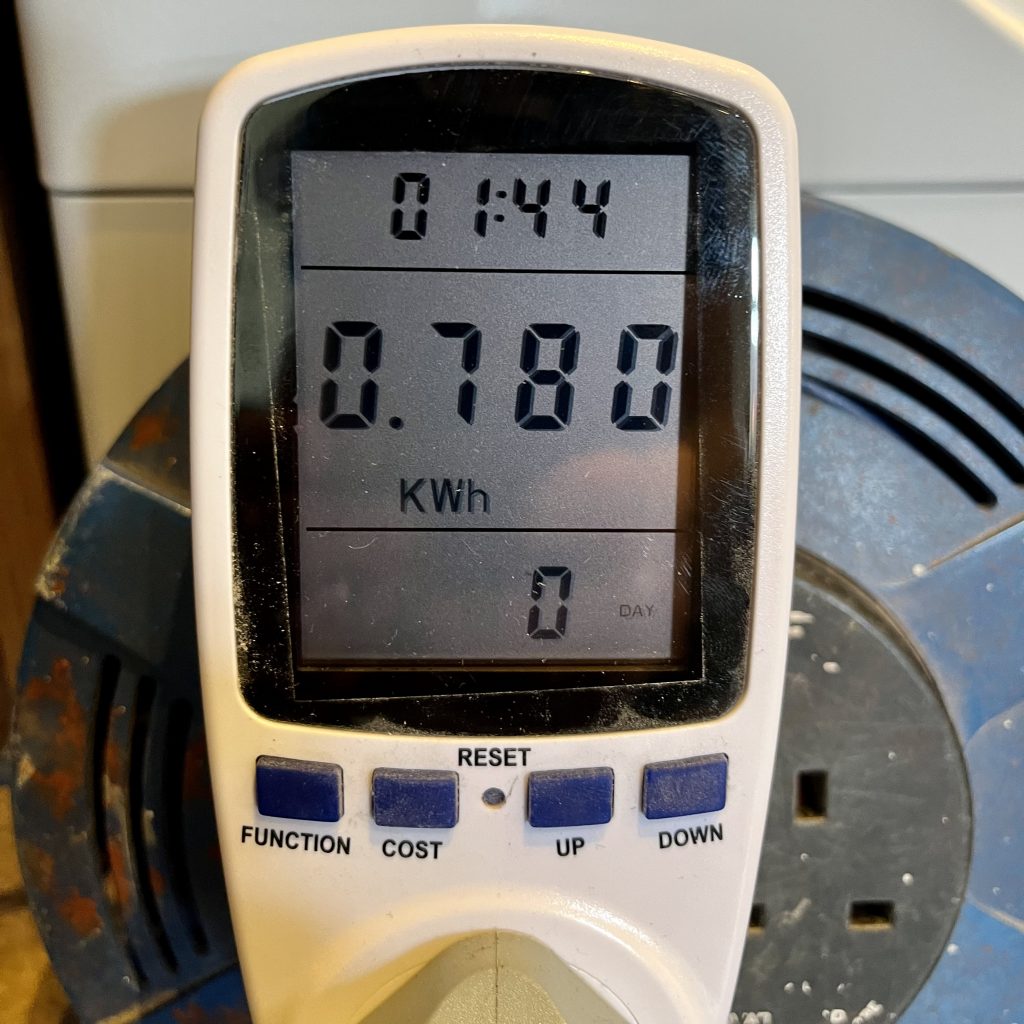
You will find that the heat pump tumble dryer runs longer than a condenser model. This is because the heat generated is much lower on the new model. So think low and slow, just like low temp heating.
But with much reduced energy usage, and quieter running you soon get used to it.
One Minor Gripe
This is a minor one, but needs mentioning.
I don’t know if it is all heat pump models, but this Bosch one doesn’t reverse the direction of the drum. So you can end up with large items like duvet covers just becoming a large ball. And because the heat in the dryer is a lot lower, those scrunched up items can come out with damp patches.
You just need to be aware and half way through, open the door and give everything a shake out before starting again.
We never have this problem with smaller items; t-shirts, trousers etc etc.
Are Heat Pump Tumble Dryers cheaper to run?
Absolutely yes.
Let’s take consumption figures from the respective manuals, basing things on current 30p per kWh of electricity (May 2022).
- Heat Pump: Cupboard Dry, 8kg, 1.2kWh x 30p = 36p
- Condenser: Cupboard Dry, 7kg, 3.92kWh x 30p = £1.17
So around 80p saving per load. 3 loads a week = £2.40 saved per week.
You can do the maths to work out savings based on your own usage patterns.
And also, for those with a Solar PV setup and Battery Storage like myself I’m finding it much easier to run the heat pump dryer off solar/storage because of the lower 500W energy draw.
Because the condensing model used over 2kW you’d end up importing unless it was a very sunny day.
So that’s another plus point of the heat pump model.
Yes, the initial outlay is larger than a condensing model, but as the figures above show, it could pay for itself financially in the long run.
And don’t forget you won’t end up with a steamed up kitchen/utility room and super hot clothes at the end of the drying cycle.
Highly recommend by us.
If you find this information useful and are thinking of joining Octopus Energy, please consider using my referral code or ‘buy me a coffee’ to help support running costs of the website.
Using this referral code will gift you £50 of free credit after signup: https://share.octopus.energy/linen-pearl-869
If you’re considering owning part of a wind farm through Ripple Energy, get £25 of free credit (if investing more than £1000) using my Ripple referral link.
We can also be found on Twitter, please follow us @energystatsuk for daily Agile tariff pricing graphs and summaries.
Also, be sure to check out our Dashboard, Download Historical Data and OctoChargeCalc features to help you decide whether these tariffs are the right fit for you.
Note: The past performance of energy pricing is not necessarily a guide to the future.
